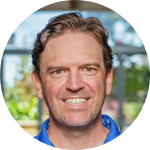About This Project
We will harness biotechnology and polymer engineering for the development of live-cell biocatalytic materials for CO2 capture. Live cells have a plethora of potential to be utilized as sustainable catalysts for CO2 capture, but they are often more vulnerable when compared to other methods. We propose evolution to breakthrough the critical drawback, poor cell stability. If successful, the living materials can be used as self-regenerative and low-cost biocatalysts for CO2 capture.
Ask the Scientists
Join The DiscussionWhat is the context of this research?
Atmospheric CO2 removal (CDR) and point-source capture (PSC) of CO2 are well-accepted as being necessary for successfully decarbonizing within climate goals (1). Direct air capture (DAC) is a CDR pathway with ideal verifiability and durability. Both DAC and PSC are cost constrained, primarily by the CapEx of the gas contactor and the energy required to drive large swings in temperature or pH to regenerate CO2 from the capture material (2).
Those high cost and energy requirements are driven by a thermodynamic trade-off between the rate of CO2 absorption and the CO2 regeneration energy: CO2 capture materials with high absorption rate, which reduce cost by reducing the gas contactor size, typically have high CO2 regeneration energy, and vice versa (3).
What is the significance of this project?
Carbonic anhydrases (CAs) catalyze fast CO2 absorption in solvents with low CO2 regeneration energy, resolving the trade-off described above (4). However, CAs can be easily denatured during CO2 capture and lose their activities within a few days (5). The high price of purified enzyme (> $2,000 per gram, Sigma) is another challenge for the successful implementation of CAs for CO2 capture.
Such challenges of CAs can be addressed by utilizing live bacteria as biofactories that constitutively produce CAs. Bacteria can serve both as CA-containing living biocatalysts and self-regenerative biofactories, which intrinsically produce valuable CAs from relatively cheap nutrients. Thus, employing biocatalytic bacterial cells can improve the sustainability and feasibility of CO2 capture process.
What are the goals of the project?
This proposal seeks to (1) evolutionarily-engineer the biocatalytic bacteria via Adaptive Laboratory Evolution (ALE) to improve their CO2 capture performance and the stability under CO2 capture process, (2) combine the evolved bacteria with polymers to program complex biofunctions, and (3) demonstrate the biocatalytic CO2 capture reactors using the living biocatalytic composites.
Example benchmarks of immobilized whole cell biocatalysts for CO2 capture are:
1. CO2 conversion rate by immobilized E. coli in polyurethane (PU) foam: ~0.01 Wilbur-Anderson Unit / OD600 (6)
2. Half-life of immobilized E. coli in PU foam: ~10 days in 20 mM Tris pH 8.3 at 60 °C (6)
Stability demonstrations should be performed in solvents relevant to DAC and PSC, such as 10-20% K2CO3.
Budget
n/a
 Project Timeline
Project Timeline
n/a
Dec 31, 2024
Project Completion
Meet the Team
Affiliates
Jonathan Pokorski
Professor Pokorski began his scientific career by earning his B.S. in Biochemistry from UCLA in 2002. While at UCLA, he worked in private industry designing and testing biomedical devices that are currently in use around the world. In 2007, Dr. Pokorski received his doctoral degree in organic chemistry from Northwestern University, where he designed, synthesized, and tested diverse peptidomimetic systems for use in medical diagnostics and therapeutics. Dr. Pokorski then moved to The Scripps Research Institute, where he used both chemical and genetic engineering of viral nanoparticles to synthesize novel drug delivery systems. During postdoctoral training, Dr. Pokorski first earned an NIH Ruth Kirschstein fellowship and later secured an NIH Pathway to Independence Award.
Dr. Pokorski joined the faculty at Case Western Reserve university in the department of Macromolecular Science and Engineering in 2012 and moved to the Nanoengineering department at UCSD in 2018. Pokorski’s laboratory works to bridge chemical synthesis, molecular biology, and materials science to make new materials for biomedical applications. The Pokorski lab is particularly interested in marrying biological and polymer science to generate biocomposite materials for medicine and the environment. Research in the Pokorski lab is funded through grants from the National Institutes of Health, National Science Foundation, Department of Energy and the American Chemical Society.
Han Sol Kim
Han Sol Kim, Ph.D., is a Postdoctoral Researcher in the Department of NanoEngineering at the University of California San Diego. He received his B.S. and Ph.D. degrees in Chemical & Biological Engineering from Korea University in 2012 and 2020, respectively. During his Ph.D., he combined nanostructured materials with enzymes in the form of nanobiocatalysts to improve the activity and stability of enzymes. Dr. Kim has utilized nanobiocatalysts for CO2 sequestration, bioremediation, biosensors, biofuel cells, etc. His current research interest is focused on pairing live cells and polymer to generate biocomposite materials with programmed biofunctions.
Adam Feist
Adam Feist is a Principle Investigator as a Research Scientist at UCSD and a Group Leader at the Center for Biosustainability at the DTU. He received a PhD in Bioengineering from UCSD in 2008 and a B.S. in Chemical Engineering from UNL in 2003. Adam’s research expertise is focused on adaptive laboratory evolution, laboratory automation for biological experimentation, and constraint-based reconstruction and modeling. He has applied his expertise broadly towards applications in industrial biotechnology, metabolic engineering, and biomedicine to solve problems associated with strain design and understanding emergent properties of microorganisms. Adam has co-authored over 100 peer-reviewed publications in these fields, has an h-index of 52 with over 15,000 overall citations, and has served as a research advisor for numerous PhD students and Post-docs. Adam was awarded the Jay Bailey Young Investigator Award in Metabolic Engineering in 2018 and has been recognized as a Top 2% Researcher by PLoS Biology for multiple years. Adam also has 2 years of experience in industry working at a start-up company focused on commercializing constraint-based modeling in the field of human health.
Additional Information
Project Backers
- 0Backers
- 0%Funded
- $0Total Donations
- $0Average Donation


